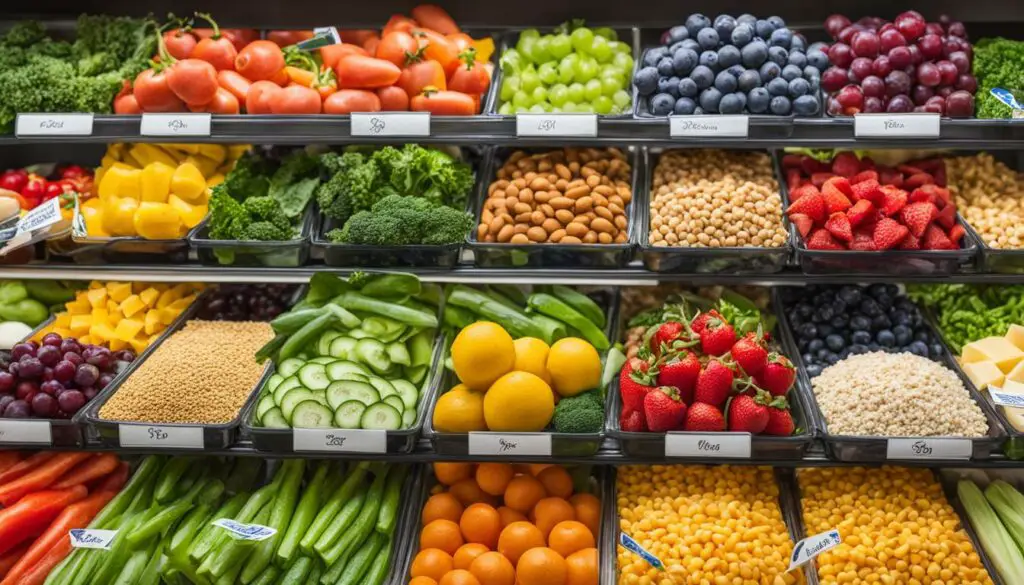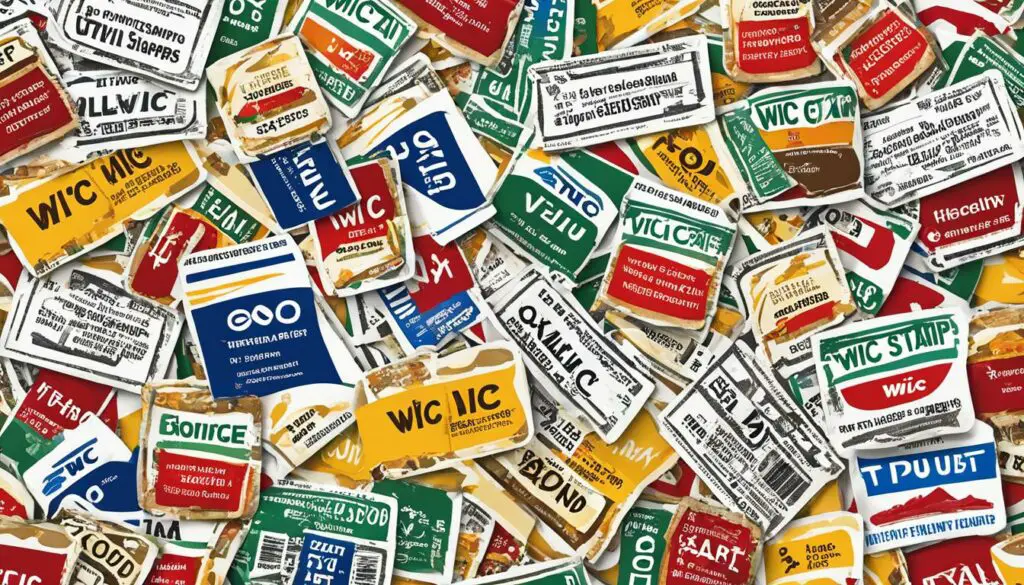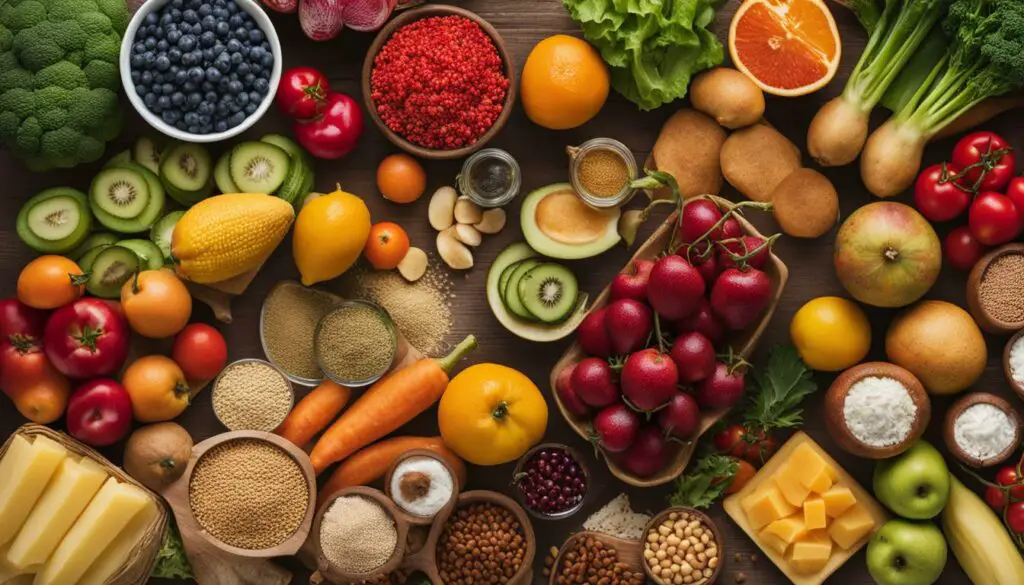Originally posted on December 20, 2023 @ 4:29 pm
Are you wondering if you can qualify for both WIC and food stamps benefits? In this article, we will explore the eligibility requirements, qualifications, and application process for these crucial government assistance programs.
WIC, which stands for the Women, Infants, and Children program, is a supplemental nutrition program that serves nutritionally at-risk pregnant, breastfeeding, or postpartum women, infants, and children until their 5th birthday. But eligibility for WIC benefits is not limited to mothers and children – dads, grandparents, and foster parents can also apply. To qualify for WIC, the income guidelines are set at or below 185% of the Federal Poverty Level (FPL). If you already receive Medicaid insurance, SNAP (Supplemental Nutrition Assistance Program), or TFA (Temporary Family Assistance) benefits, then you are also eligible for WIC benefits. The application process typically involves providing proof of identity and Connecticut residency. It’s important to note that WIC does not ask about immigration status, making it accessible to all eligible individuals.
On the other hand, SNAP provides benefits to supplement a family’s food budget. Eligibility for SNAP benefits is based on household income and assets. A household is defined as any related or unrelated people living under the same roof who generally share meals. Monthly SNAP benefits are calculated based on the household’s income. The benefits are provided monthly on an Electronic Benefits Transaction (EBT) card, which can be used to purchase staple foods and other eligible items.
Table of Contents
Key Takeaways:
- WIC serves pregnant women, breastfeeding women, postpartum women, infants, and children until their 5th birthday.
- Qualifying for Medicaid insurance, SNAP, or TFA benefits makes individuals eligible for WIC benefits.
- Snap provides benefits to supplement a family’s food budget based on household income and assets.
- WIC offers specific amounts and types of foods based on individual nutritional needs.
- Maximizing benefits involves planning ahead, sticking to the shopping list, and using available resources.
WIC Program Details

The WIC program provides vital support to nutritionally at-risk individuals, including pregnant women, breastfeeding women, postpartum women, infants, and children. It aims to ensure that these vulnerable groups have access to nutritious foods, nutrition education, breastfeeding support, and important referrals. The program is committed to promoting healthy outcomes and improving the overall well-being of participants.
One of the key aspects of the WIC program is the selection of WIC-approved foods. These foods are carefully chosen based on their nutritional value and in line with the USDA standards. Different categories of participants, such as pregnant women, breastfeeding women, postpartum women, infants, and children, receive specific amounts and types of foods tailored to their nutritional needs.
The benefits provided by the WIC program are loaded onto an electronic WIC (eWIC) card, which works like a debit card. Participants can use the card to purchase approved foods at authorized grocery stores and retailers. It’s important to note that these benefits are valid for 30 days and do not roll over if unused, encouraging participants to utilize them effectively.
Through the WIC program, pregnant women can access the necessary nutrition to support both their health and the growth and development of their babies. Breastfeeding women receive essential resources and guidance to ensure successful breastfeeding experiences. Postpartum women receive nutrition support as they transition to the postpartum period, promoting their own health and well-being.
Image:
Infants and children up until their 5th birthday also benefit from the WIC program. They receive nutritious foods that are critical for their growth and development during these crucial early years. The program’s comprehensive approach also includes nutrition education, which equips participants with valuable knowledge to make informed choices and develop healthy eating habits.
Furthermore, the WIC program offers invaluable breastfeeding support to participants. Breastfeeding is encouraged and prioritized, as it provides numerous benefits for both mothers and babies. Through counseling, education, and other resources, WIC helps breastfeeding women navigate any challenges they may face and ensures successful breastfeeding experiences.
At its core, the WIC program addresses the needs of nutritionally at-risk individuals, promoting their health, well-being, and access to important resources. By providing nutritious foods, nutrition education, breastfeeding support, and referrals, the program plays a vital role in supporting the overall health and development of pregnant women, breastfeeding women, postpartum women, infants, and children.
SNAP Program Details
The Supplemental Nutrition Assistance Program (SNAP) is a federal assistance program designed to supplement a family’s food budget. SNAP benefits are provided to eligible individuals and families based on their household income and assets. To qualify for SNAP benefits, individuals must meet the income and asset guidelines set by the program.
Eligibility Requirements
To be eligible for SNAP benefits, a household is defined as any related or unrelated people living under the same roof who generally share meals. The eligibility is determined by the household’s income and assets. The monthly SNAP benefits are calculated based on the household’s income level.
Households with higher incomes may still qualify for SNAP benefits if they have significant expenses, such as high rent or medical bills. On the other hand, households with lower incomes may receive more substantial SNAP benefits.
SNAP Benefits
SNAP benefits are provided monthly on an Electronic Benefits Transaction (EBT) card. This card works like a debit card and can be used to purchase staple foods and other eligible items at authorized retailers, including grocery stores, supermarkets, and farmers markets.
The specific items that can be purchased with SNAP benefits include:
- Meat, poultry, and fish
- Dairy products
- Fruits and vegetables
- Grains and bread
- Canned and packaged goods
- Seeds and plants for growing food
SNAP benefits cannot be used to purchase non-food items such as tobacco, alcohol, vitamins, or hot prepared foods. It’s important to note that SNAP benefits cannot be exchanged for cash.
Simplifying Access to SNAP Benefits
The SNAP program strives to make access to benefits as easy as possible. Interested individuals can apply for SNAP benefits online or in-person at their local SNAP office. The application process typically requires providing information about household income, assets, and expenses. Applicants may also need to provide documentation such as identification, proof of residency, and proof of income.
The goal of the SNAP program is to ensure that eligible individuals and families have access to the nutrition they need to maintain a healthy lifestyle. SNAP benefits not only supplement a family’s food budget but also contribute to overall food security and well-being.
| Income Guidelines for SNAP Benefits | Maximum Allowable Household Assets | |
|---|---|---|
| Household Size | Income Limit | Asset Limit |
| 1 | $1,383 | $3,500 |
| 2 | $1,868 | $6,000 |
| 3 | $2,353 | $6,000 |
| 4 | $2,839 | $6,000 |
| 5 | $3,324 | $6,000 |
| 6 | $3,809 | $6,000 |
| 7 | $4,295 | $6,000 |
| 8 | $4,780 | $6,000 |
Eligibility Requirements

| Eligibility Requirements |
|---|
|
To qualify for WIC benefits, individuals must meet the income guidelines, which are at or below 185% of the Federal Poverty Level (FPL). In addition to income requirements, individuals who receive Medicaid insurance, SNAP, or TFA benefits are also eligible for WIC benefits. Other eligibility requirements include providing proof of identity and Connecticut residency. For SNAP benefits, eligibility is based on household income and assets. A household is defined as any related or unrelated people living under the same roof who generally share meals. The monthly SNAP benefits are calculated based on the household’s income. Similar to WIC, proof of identity and Connecticut residency are necessary for SNAP benefits. |
Both the WIC and SNAP programs offer valuable assistance to individuals and families in need. Meeting the eligibility requirements allows individuals to access essential WIC benefits and SNAP benefits, promoting better nutrition and overall well-being.
Maximizing WIC and SNAP Benefits

To maximize your WIC and SNAP benefits and get the most out of these valuable resources, it’s crucial to plan ahead and utilize the available tools and strategies. By following these shopping tips and making informed choices, you can stretch your benefits further and ensure that you and your family have access to nutritious foods.
Create a Comprehensive Shopping List
Before heading to the store, take the time to review your WIC family benefit list and pay attention to the start and end dates. This will help you identify what items you are eligible to purchase with your WIC benefits. Use this information to create a shopping list with specific WIC-approved items you plan to buy. By having a clear plan in place, you can avoid impulse purchases and make the most of your benefits.
Supplement with SNAP Benefits
While WIC provides a range of nutritious foods, there are items that it may not cover. That’s where SNAP benefits come in. These benefits can be used to purchase additional grocery items, such as meat, canned soups, snack items, and frozen meals. By utilizing your SNAP benefits alongside your WIC benefits, you can ensure a well-rounded and balanced diet for you and your family.
Check Your SNAP Balance
Prior to heading to the grocery store, it’s a good idea to check the available balance on your SNAP card. This will help you plan your purchases and avoid any surprises at the checkout counter. By being aware of your balance, you can make informed decisions and maximize the purchasing power of your SNAP benefits.
Stick to Your List and Utilize the WICShopper App
When at the grocery store, it’s important to stick to your shopping list and avoid unnecessary purchases. This will help you stay within your budget and maximize the value of your benefits. If you need assistance in finding WIC-approved substitutes for certain items, consider using the WICShopper app. This app provides helpful information and suggestions to ensure you make the most of your WIC benefits.
Pay Attention to Expiration Dates
To reduce food waste and ensure the freshest and highest quality foods for your family, pay close attention to expiration dates when shopping. By choosing items with later expiration dates, you can make sure that your purchases last longer and are enjoyed at their best.
Remember, by maximizing your WIC and SNAP benefits through smart shopping and strategic use, you can provide your family with the nutrition they need while making the most of the government assistance available to you. Plan ahead, stick to your list, and make informed choices to ensure a healthier future for you and your loved ones.
Using WIC and SNAP Benefits Together

If you qualify for both the WIC and SNAP programs, you can take advantage of the benefits offered by both to maximize the value of your assistance. By implementing smart shopping strategies and adopting healthy eating habits, you can make the most of these programs and stretch your benefits for the benefit of your family.
One way to optimize your benefits is by utilizing your WIC benefits specifically for WIC-approved foods. These foods are carefully chosen based on their nutritional value and meet the standards set by the USDA. By using your WIC benefits for these specific items, you ensure that you receive the maximum nutritional benefits for yourself and your family.
Supplementing your WIC benefits with SNAP benefits allows you to cover additional grocery items not provided by WIC. SNAP benefits can be used to purchase staple foods, as well as other eligible items, such as meat, canned soups, snack items, and frozen meals. By combining the two programs, you can ensure that you have a well-rounded grocery list that covers all your family’s needs.
Smart shopping is key to making the most out of your benefits. Before heading to the grocery store, take the time to review your WIC family benefit list and pay attention to the start and end dates of your benefits. Create a shopping list that includes the WIC-approved items you plan to buy, as well as any additional items you need that can be purchased using SNAP benefits.
Checking your available SNAP balance before shopping is also important. This allows you to plan your purchases accordingly and make the most of your benefits. Additionally, sticking to your shopping list and using the WICShopper app can help you find WIC-approved substitutes if a specific item is not available.
Paying attention to expiration dates is crucial to minimizing food waste. By incorporating smart shopping strategies and using your WIC and SNAP benefits effectively, you can maximize the value of your assistance and ensure that your family receives the nutrition they need.
| Program | Benefits | Key Features |
|---|---|---|
| WIC | Nutritious foods, nutrition education, breastfeeding support, referrals | Specific amounts and types of foods based on category and nutritional needs |
| SNAP | Supplement for food budget | Benefits based on household income and assets |
By using WIC and SNAP benefits together, you can optimize your nutrition assistance and make the most out of the resources available to you. Remember to plan ahead, create a shopping list, and prioritize WIC-approved foods while supplementing with SNAP benefits for additional grocery items. With smart shopping and healthy eating habits, you can maximize the value of your benefits and ensure the well-being of your family.
Additional Resources

If you are in need of more assistance with accessing food resources, there are several options available to you. The following resources can provide further guidance and support in navigating the WIC and SNAP programs:
Contact Your Local WIC Office
To find your nearest WIC office, you can visit the official USDA WIC website or call the national WIC toll-free hotline at 1-800-WIC-WINS. These local offices are staffed with professionals who can answer your questions, provide application assistance, and offer valuable information on the program.
Dial 211
If you prefer to speak with someone directly, dial 211 for a vast network of community resources. By dialing this number, you can connect with specialists who can guide you to local organizations and programs that offer food assistance, including WIC and SNAP.
Explore Food Resources Online
Additionally, you can explore various online resources that provide comprehensive information on food assistance programs and access to nutritious options. Websites like www.FoodResources.com and www.FeedingAmerica.org offer valuable tools, such as food banks locators, meal programs, and educational resources to help you find the support you need.
Remember, these resources are designed to help individuals and families obtain the necessary assistance and support for accessing nutritious food options. Reach out to your local WIC office, dial 211, or explore the provided links to connect with the additional resources available in your area.
| Resource | Contact Information |
|---|---|
| USDA WIC Hotline | 1-800-WIC-WINS |
| 211 | Dial 211 |
| FoodResources.com | www.FoodResources.com |
| Feeding America | www.FeedingAmerica.org |
Conclusion

Both the WIC and SNAP programs play crucial roles in providing essential nutrition assistance to eligible individuals and families. By meeting the eligibility requirements and effectively utilizing these benefits, individuals can access nutritious foods and improve their overall well-being. Maximizing the value of WIC and SNAP benefits through smart shopping and healthy eating habits is key to making the most of the assistance available.
WIC, as a supplemental nutrition program, specifically serves nutritionally at-risk pregnant, breastfeeding, or postpartum women, infants, and children until their 5th birthday. Dads, grandparents, and foster parents can also apply for WIC benefits. On the other hand, SNAP provides benefits to supplement a family’s food budget and is based on household income and assets.
By combining the benefits of both programs, eligible individuals can optimize their access to nutritious foods and make informed choices for their families’ well-being. Smart shopping practices and healthy eating habits can go a long way in stretching these benefits and maximizing their value.
| Benefits | WIC | SNAP |
|---|---|---|
| Nutritionally at-risk population | Pregnant, breastfeeding, or postpartum women, infants, and children until their 5th birthday | Households with income and asset eligibility |
| Assistance Provided | Supplemental nutritious foods, nutrition education, breastfeeding support, and referrals | Benefits to supplement a family’s food budget |
| Application Process | Proof of identity and Connecticut residency | Proof of identity and Connecticut residency |
| Monthly Benefits | Specific amounts and types of foods, provided on the eWIC card | Calculated based on household income, provided on an EBT card |
It’s important for individuals to familiarize themselves with the eligibility requirements and available resources for both programs, such as local WIC offices and the 211 helpline. These additional resources can provide further assistance and support in accessing nutritious food options and navigating the WIC and SNAP programs.
By harnessing the potential of WIC and SNAP benefits and making informed choices, individuals can improve their overall nutritional status and enhance their quality of life.
Additional Information
For individuals seeking more detailed information on the WIC and SNAP programs, it is important to understand the program details, eligibility criteria, and the types of foods and services allowed. By having a comprehensive understanding of these programs, individuals can make informed decisions regarding their eligibility and participation.
The WIC program is designed to provide nutrition assistance to pregnant, breastfeeding, or postpartum women, infants, and young children who are nutritionally at risk. The program offers a variety of benefits, including nutritious foods, nutrition education, breastfeeding support, and referrals. The specific foods provided by WIC are carefully chosen based on their nutritional value and USDA standards, ensuring that participants receive the necessary nutrients for their overall well-being.
In contrast, the SNAP program aims to supplement a family’s food budget by providing benefits based on their household income and assets. SNAP benefits are calculated on a monthly basis and are loaded onto an Electronic Benefits Transaction (EBT) card, which can be used to purchase staple foods and other eligible items. This program offers flexibility in food choices, allowing participants to meet their specific dietary needs and preferences within the program guidelines.
When it comes to the types of foods and services allowed, both the WIC and SNAP programs have specific guidelines. WIC-approved foods include fruits and vegetables, whole grains, dairy products, and protein sources such as meat, fish, and beans. Additionally, WIC provides infant formula for infants who are not fully breastfed. SNAP benefits, on the other hand, can be used to purchase a wide range of food items, including fresh produce, dairy products, meat, poultry, fish, cereals, and more.
It is important to note that both programs have regulations in place to ensure that the benefits are used appropriately. Participants are encouraged to familiarize themselves with the specific guidelines provided by each program and seek guidance from program administrators or caseworkers for any clarification or assistance needed.
By understanding the WIC and SNAP program details, eligibility criteria, and the types of foods and services allowed, individuals can navigate these programs effectively and make the most of the nutrition assistance provided to them.
Frequently Asked Questions (FAQ) About WIC and SNAP
Curious about how the WIC and SNAP programs work? Here are some frequently asked questions to help you understand these important programs:
1. Who is eligible for WIC and SNAP benefits?
To be eligible for WIC benefits, individuals must meet the income guidelines, fall within the specified categories (such as pregnant women, breastfeeding women, infants, and children), and meet other requirements like proof of identity and residency. SNAP benefits are based on household income and assets. If you qualify for Medicaid insurance, SNAP, or TFA benefits, you may also be eligible for WIC benefits.
2. How can I maximize my WIC and SNAP benefits?
Planning ahead is key to maximizing your benefits. Review your WIC benefit list and create a shopping list with approved items. Use your SNAP benefits for items that WIC doesn’t cover, like meat and canned soups. Stick to your list while shopping and use the WICShopper app to find approved substitutes. By smart shopping and paying attention to expiration dates, you can make the most of your benefits and reduce food waste.
3. Can I use WIC and SNAP benefits together?
If you qualify for both WIC and SNAP, you can receive benefits from both programs. By using your WIC benefits for specific WIC-approved foods and supplementing with SNAP benefits for other grocery items, you can stretch your benefits and make the most of the assistance provided.
Now that you have answers to some common questions, you can take advantage of the valuable nutrition assistance offered by the WIC and SNAP programs. Remember to reach out to your local WIC office or dial 211 if you need additional support or resources.
FAQ
Can anyone get WIC and food stamps?
To be eligible for WIC, individuals must meet the income guidelines, which are at or below 185% of the Federal Poverty Level (FPL). Dads, grandparents, and foster parents can also apply for WIC benefits. For food stamps, eligibility is based on household income and assets.
Who does the WIC program serve?
The WIC program serves nutritionally at-risk pregnant, breastfeeding, or postpartum women, infants, and children until their 5th birthday. It also includes dads, grandparents, and foster parents who can apply for WIC benefits.
What does the SNAP program provide?
The SNAP program provides benefits to supplement a family’s food budget. The monthly SNAP benefits are calculated based on household income and assets. The benefits are provided on an Electronic Benefits Transaction (EBT) card and can be used to purchase staple foods and other eligible items.
What are the requirements to receive WIC benefits?
To qualify for WIC benefits, individuals must meet the income guidelines, which are at or below 185% of the Federal Poverty Level (FPL). Qualifying for Medicaid insurance, SNAP, or TFA benefits also makes individuals eligible for WIC benefits. Other requirements include proof of identity and Connecticut residency.
How can I maximize my WIC and SNAP benefits?
It is important to plan ahead and make the most of the available resources. Before shopping, review your WIC benefit list, pay attention to start and end dates, and create a shopping list with WIC-approved items you plan to buy. SNAP benefits can be used for items that WIC doesn’t provide. Sticking to the list and using the WICShopper app can be helpful. Pay attention to expiration dates to reduce food waste.
Can I receive benefits from both WIC and SNAP?
Yes, if individuals qualify for both WIC and SNAP, they can receive benefits from both programs. Smart shopping and healthy eating habits can help maximize the value of these benefits for their families.
Where can I find additional resources for food assistance?
Individuals who need more help with food can reach out to their local WIC office, dial 211, or explore the provided links for additional resources. These resources can provide further assistance and support in accessing nutritious food options and navigating the WIC and SNAP programs.
Is there more detailed information available on the WIC and SNAP programs?
For more detailed information on the WIC and SNAP programs, including eligibility criteria, benefits provided, and the types of foods and services allowed, individuals can visit the provided links and resources. These sources offer comprehensive information to help individuals understand the programs fully and make informed decisions regarding their eligibility and participation.
Source Links
- https://uwc.211ct.org/wic-and-or-snap-benefit-comparison-and-eligibility/
- https://portal.ct.gov/-/media/Departments-and-Agencies/DSS/SNAP/Maximizing-your-WIC-and-SNAP-benefits-English.pdf
- https://connecticut.wicresources.org/maximizing-wic-snap-benefits.html
See also:
Leave a Reply